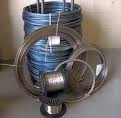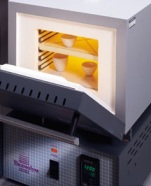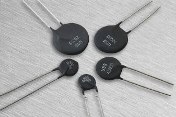How heating affects resistance value
 Specific metal resistance when heated, it increases as a result of an increase in the speed of movement of atoms in the conductor material with increasing temperature. On the contrary, the resistance of electrolytes and coal decreases when heated, because in these materials, in addition to increasing the speed of movement of atoms and molecules, the number of free electrons and ions per unit volume increases.
Specific metal resistance when heated, it increases as a result of an increase in the speed of movement of atoms in the conductor material with increasing temperature. On the contrary, the resistance of electrolytes and coal decreases when heated, because in these materials, in addition to increasing the speed of movement of atoms and molecules, the number of free electrons and ions per unit volume increases.
Some alloys with high resistanceof their constituent metals, they hardly change the resistance when heated (constantan, manganin, etc.). This is due to the irregular structure of the alloys and the small mean free path of the electrons.
A value that indicates the relative increase in resistance when the material is heated by 1 ° (or decrease when it is cooled by 1 °) is called temperature coefficient of resistance.
If the temperature coefficient is denoted by α, resistance at se=20О through ρo, then when the material is heated to temperature t1, its resistance is p1 = ρo + αρo (t1 — to) = ρo (1 + (α(t1 — to ))
and accordingly R1 = Ro (1 + (α(t1 — to))
Temperature coefficient a for copper, aluminum, tungsten is 0.004 1 / degree. Therefore, when heated to 100 °, their resistance increases by 40%. For iron α = 0.006 1 / grad, for brass α = 0.002 1 / grad, for fehral α = 0.0001 1 / grad, for nichrome α = 0.0002 1 / grad, for constantan α = 0.00001 1 / grad , for manganin α = 0.00004 1 / deg. Coal and electrolytes have a negative temperature coefficient of resistance. The temperature coefficient for most electrolytes is approximately 0.02 1 / degree.
The property of wires to change their resistance depending on the temperature is used resistance thermometers... By measuring the resistance, the temperature of the environment is determined by calculation. Constantan, manganin and other alloys with a very low temperature coefficient of resistance are used to make shunts and additional resistances of measuring instruments.
 Example 1. How will resistance change Ro iron wire when heated at 520 °? Temperature coefficient a of iron 0.006 1 / deg. According to the formula R1 = Ro + Roα(t1 — to) = Ro + Ro 0.006 (520 — 20) = 4Ro, that is, the resistance of the iron wire when heated by 520 ° will increase 4 times.
Example 1. How will resistance change Ro iron wire when heated at 520 °? Temperature coefficient a of iron 0.006 1 / deg. According to the formula R1 = Ro + Roα(t1 — to) = Ro + Ro 0.006 (520 — 20) = 4Ro, that is, the resistance of the iron wire when heated by 520 ° will increase 4 times.
Example 2. Aluminum wires at -20 ° have a resistance of 5 ohms. It is necessary to determine their resistance at a temperature of 30 °.
R2 = R1 — αR1 (t2 — t1) = 5 + 0.004 x 5 (30 — (-20)) = 6 ohms.
The property of materials to change their electrical resistance when heated or cooled is used to measure temperatures. Thus, thermoresistances, which are platinum or pure nickel wires fused in quartz, are used to measure temperatures from -200 to + 600 °.Solid state RTDs with a large negative factor are used to accurately measure temperatures over narrower ranges.
 Semiconductor RTDs used to measure temperatures are called thermistors.
Semiconductor RTDs used to measure temperatures are called thermistors.
Thermistors have a high negative temperature coefficient of resistance, that is, when heated, their resistance decreases. Thermistors made of oxide (oxidized) semiconductor materials consisting of a mixture of two or three metal oxides. Copper-manganese and cobalt-manganese thermistors are the most widely distributed. The latter are more sensitive to temperature.
